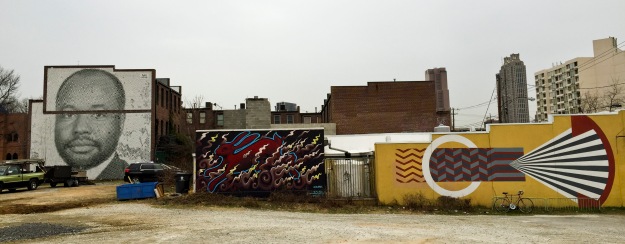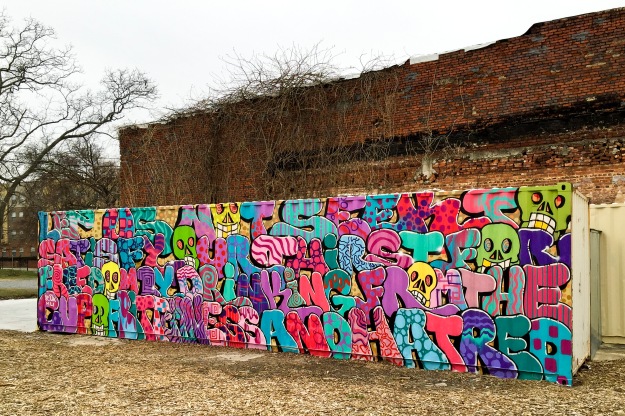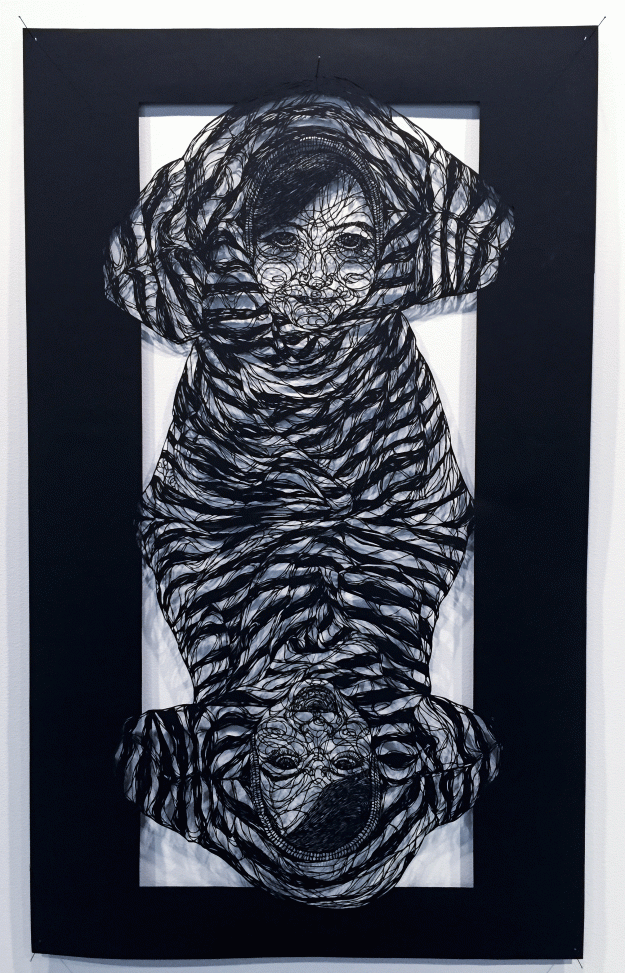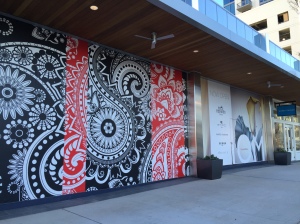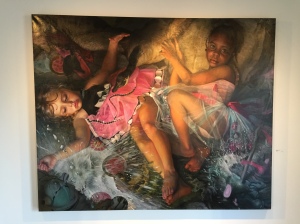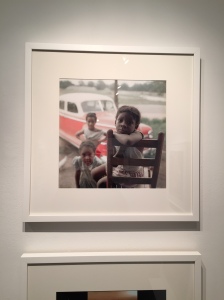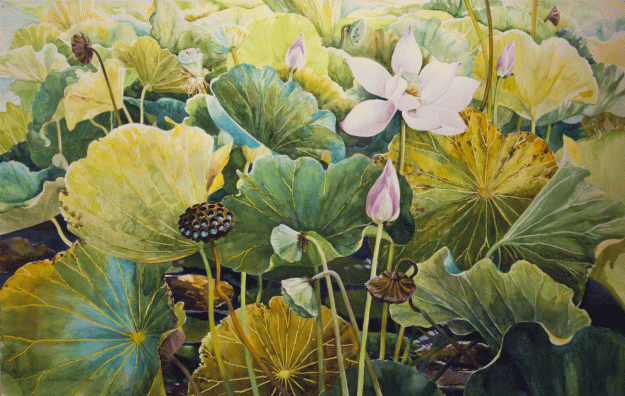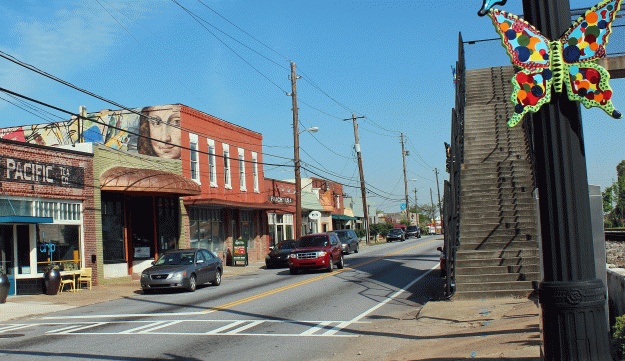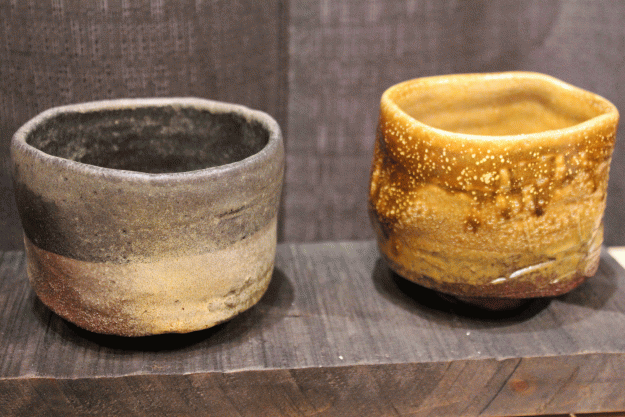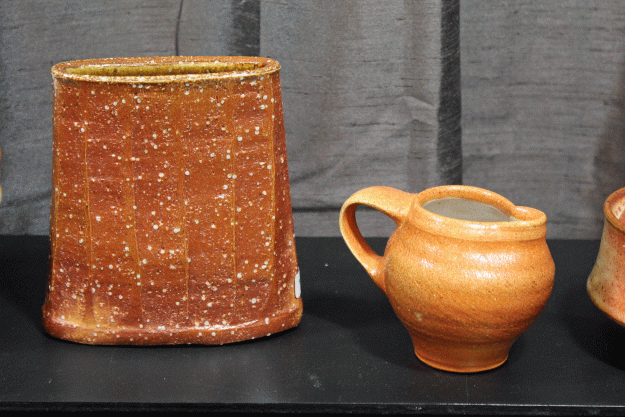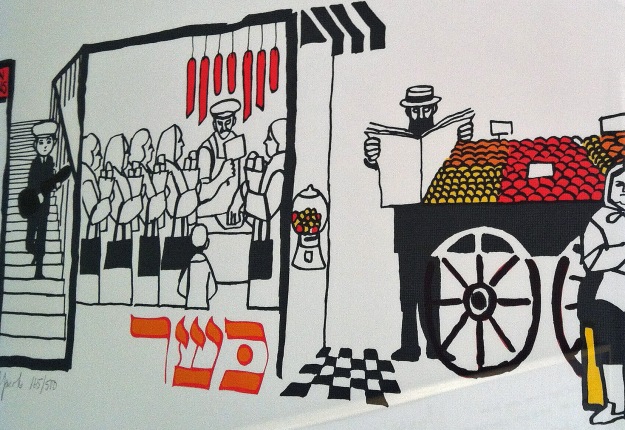We don’t know whom to thank for the “Scarlet Air” show at Whitespace. Yes, we know the names of the players. Susan Bridges, owner of Whitespace. Micah and Whitney Stansell, the artists.
That being said, we think this work transcends the players. Therefore, we thank God, and the Buddha, and William Shakespeare, and Goddess Athena, and Pachamama. We thank Ingmar Bergman. We thank the parents of the Stansells. We thank the Muses.
“Scarlet Air” is a film utilizing three full-size screens in the brick enclave of Whitespace’s big room. It’s a film, we wanted it to be a film, and don’t argue that it is not a film and therefore we don’t need a comfortable chair in which to sit and view. In Whitespace we sat on the brick floor. Perhaps we could have sat on the little stool there, or could have stood like gallery rats. But we are old and need to sit.

Two of the three screens in play during projection of “Scarlet Air” at Whitespace.
Also we needed to sit because it was not at all tolerable to watch “Scarlet Air” once or twice through. We needed to watch it several times. It’s a film simultaneously 1. overloaded with images that need three big projections running simultaneously, and two soundtracks, and brand-sweet colors, and sounds that vibrate your back if you lean against the right part of the gallery wall, and 2. shot through with holes, skips in narrative, sonically obscured dialogue, and unexplained imagery.
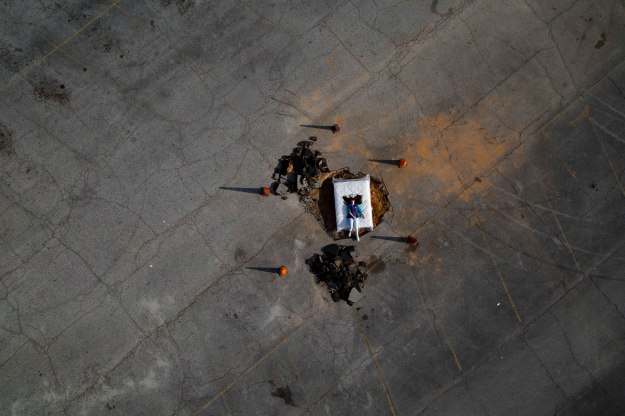
Still from “Scarlet Air,” courtesy of Whitespace.
Setting aside the artists’ statement for the time being, what is this thing, “Scarlet Air,” about? Most of the attention is given to a young woman having both typical and atypical experiences in romance, work, friendships, and family, and these are portrayed in settings and styles from a few decades ago. The narration is in a woman’s voice, perhaps the voice of that same young woman who is now older. Part of the narration says something like, “This is a memorial; this is a remembrance.”
Each scene in the film is followed by a still shot of a few key objects from the scene. They are laid on a bedspread—the model-500 telephones, powdered doughnuts in cellophane, hammer and gloves, VHS cassettes with Hollywood movie labels. Objects that seem to function as memory triggers, or possibly memory-creators.
Meanwhile the narrator reflects on the repetition in job tasks, the atmosphere of rural outdoor settings, the longing for connection with certain people, the nature of ordinary objects in daily life.
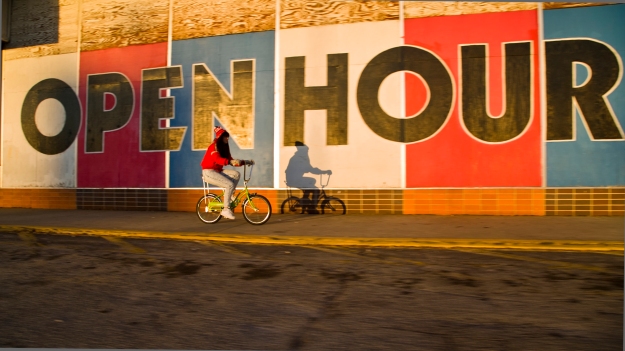
Still from “Scarlet Air,” courtesy of Whitespace.
The musical score (by Blake Williams) sounds very much like a conventional film score, though perhaps a subdued one, pursuing melodic themes, enhancing certain scenes’ emotions or tensions, implying an emotional context that is not obvious in the film’s visual elements, or drama, or narration. Overall, the score harmonizes with the narrator’s attitude and concerns, a voice of reflection, of loss and low-intensity grief, of earnest interpretation of youthful experiences, and of the fragile confidence of a maturing young woman. A young woman whose thoughts are philosophical and seek out the subtleties of life’s threads.
Our culture is awash in movies and supposedly high-quality television series, just as it is awash in novels and lists of the 10 dieting tips that will change you forever. The Stansells and other poets go on making their exhaustively detailed works that sail right over the cultural cloud and address those subtleties of our lives within it.
For that we are eternally grateful.
“Scarlet Air,” by Whitney and Micah Stansell, is on view at Whitespace through May 10, 2014.

